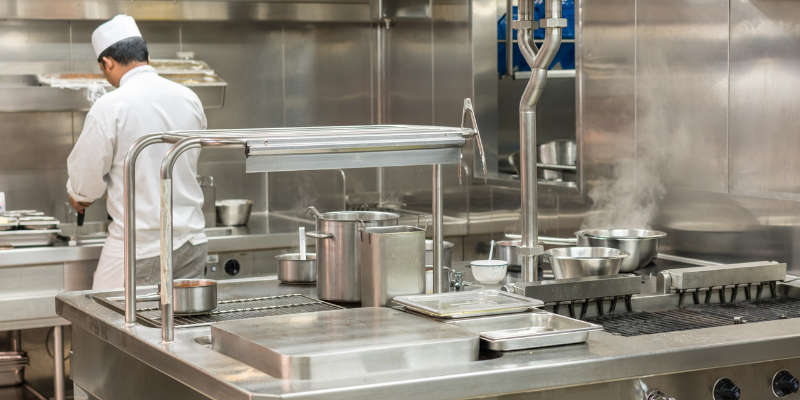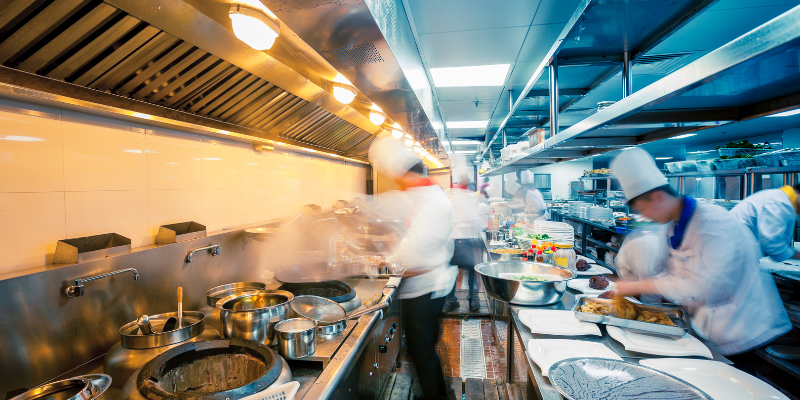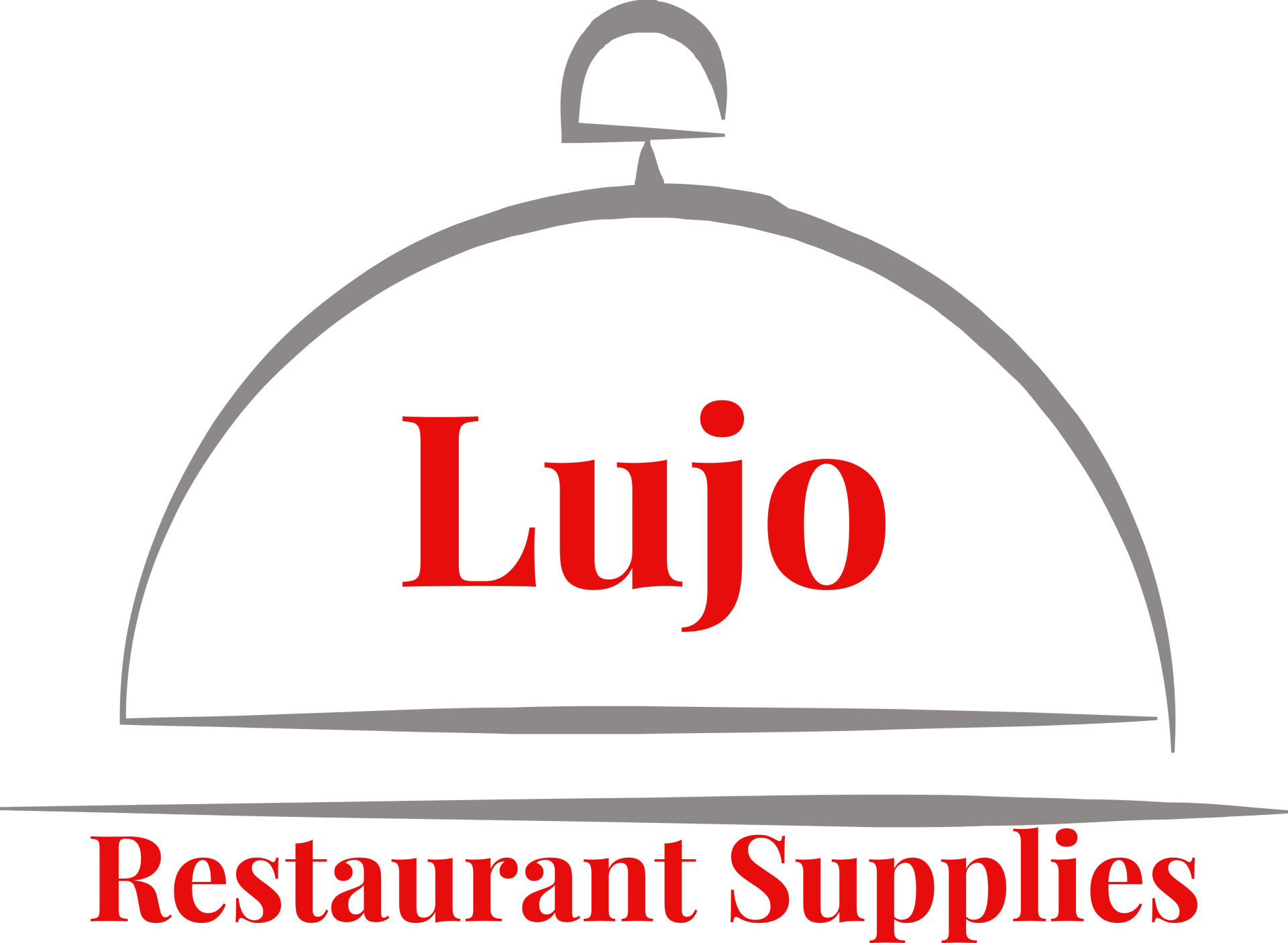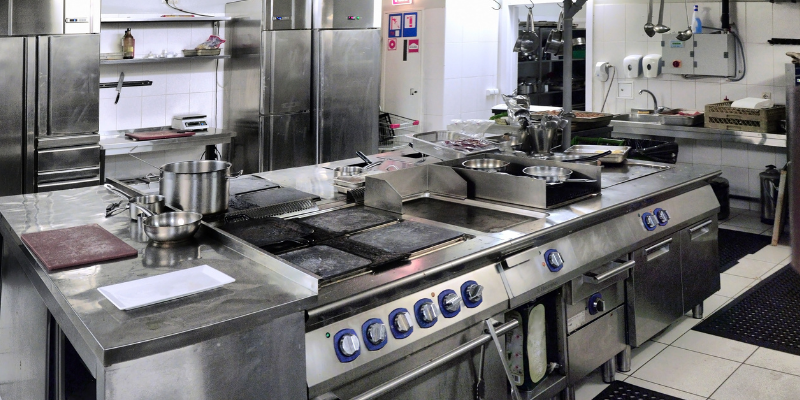Table of Contents
ToggleNavigating the complex world of restaurant equipment and supply is a daunting task for many restaurant owners.
The right choices can significantly enhance your restaurant’s efficiency, productivity, and ambiance, while the wrong ones can lead to unnecessary expenses and operational headaches.
This guide aims to provide you with comprehensive insights into selecting, maintaining, and optimizing your restaurant supplies and equipment, ensuring that your business thrives in the competitive food industry.
Key Takeaways:
- Understanding the basics
- Find reliable suppliers
- Strategies against high cost of equipment
- Expediting shipping
- Technology and restaurant management
- Best maintenance practices
- Navigating supply chain issues

Understanding the Basics of Restaurant Equipment and Supply
At the core of every successful restaurant lies a well-equipped kitchen, supported by a suite of carefully selected supplies.
These essentials form the backbone of your culinary operations, influencing everything from menu possibilities to service speed.
Restaurant equipment and supply cover a broad spectrum, including not only the restaurant’s heavy-duty appliances like grills, mixers, and freezers but also the smaller yet vital items such as chef knives, baking sheets, and glassware.
The type and volume of equipment and supplies needed hinge directly on the nature of your restaurant’s menu and the expected customer flow.
A high-volume fast-food establishment, for instance, will have very different requirements compared to a fine dining restaurant.
This means understanding the specific demands of your kitchen is the first step in making informed purchasing decisions.
It involves recognizing which pieces of equipment are indispensable for your daily operations and distinguishing them from those that are less critical or can be added later as your business grows.
Moreover, the efficiency of your kitchen, and by extension your restaurant, is significantly influenced by how well you manage these resources.
Keep a comprehensive maintenance routine
It’s not just about having the right tools but also ensuring they are of good quality and are maintained properly.
This includes everything from the industrial refrigeration units keeping your ingredients fresh to the silverware that adorns your tables.
Given the myriad of options available, striking the right balance between quality, cost, and utility can seem like a daunting task.
However, by focusing on the specific needs of your restaurant and prioritizing accordingly, you can build a foundation that supports both the current demands of your operation and its future growth.
Finding Reliable Suppliers for Your Restaurant
Identifying and partnering with dependable restaurant equipment suppliers is crucial in maintaining the seamless operation of your restaurant’s kitchen.
This task requires diligence and a strategic approach to ensure that you’re not only getting competitive pricing but also high-quality products and dependable service.
Start by conducting thorough research on potential restaurant equipment and supply dealers.
Utilize online forums, industry networks, and recommendations from fellow restaurant owners to compile a list of reputable vendors.
Pay special attention to those with a strong track record of timely deliveries and excellent customer support, as these factors can significantly impact your daily operations.
Engage in direct conversations with these suppliers to gauge their responsiveness and willingness to accommodate your restaurant’s specific needs.
Find suppliers who serve similar restaurants
Ask about their experience serving businesses similar to yours, as this can provide insight into whether they’re equipped to handle your demands.
It’s also beneficial to inquire about their flexibility regarding order sizes, payment terms, and their ability to provide emergency deliveries, should the need arise.
Another key aspect is assessing the supplier’s adaptability to industry changes and their commitment to innovation.
Suppliers who stay ahead of market trends and are proactive in offering the latest products can be invaluable partners in keeping your restaurant competitive.
Additionally, consider the geographical location of suppliers.
If your restaurant is located anywhere in Miami-Dade County, then consider partnering with a restaurant kitchen supplier in Miami.
Those closer to your restaurant can offer faster shipping times and potentially lower freight costs, enhancing your operation’s efficiency.
By carefully selecting suppliers who meet these criteria, you can establish a reliable supply chain that supports the high standards and smooth running of your restaurant.

Strategies to Combat High Costs of Supplies
Contending with the steep expenses associated with restaurant supplies necessitates inventive strategies beyond mere bulk purchasing or joining purchasing groups.
Exploring alternative sourcing options can lead to significant savings.
For instance, consider establishing direct relationships with local producers for fresh ingredients, and local dinnerware distributors.
Negotiating with suppliers for better terms becomes easier when you demonstrate loyalty and consistent purchasing patterns, which can lead to discounts or more favorable payment terms over time.
Explore energy-efficient options
Another avenue is to explore the benefits of technology and automation in reducing long-term costs.
By investing in energy-efficient restaurant equipment you can offset initial higher costs with long-term savings on utilities and supplies.
For example, energy-efficient refrigerators and LED lighting can lower electricity bills, while modern cooking appliances can decrease cooking oil usage or improve ingredient yield through precision cooking.
Moreover, leveraging the secondary market for restaurant equipment presents an opportunity to acquire high-quality items at a fraction of the cost.
Auctions, restaurant closures, and specialized resellers are potential sources for finding well-maintained or barely used equipment.
However, it’s essential to conduct thorough inspections and understand the warranty or return policies when going this route to ensure the quality and longevity of the equipment.
Be vigilant of your inventory
Lastly, maintaining a vigilant approach to inventory management can prevent overstocking and reduce waste, directly impacting the bottom line.
Utilizing inventory management software can provide insights into usage patterns, helping to fine-tune ordering schedules and quantities.
Speeding Up Shipping Times Without Breaking the Bank
To tackle the challenge of slow shipping without incurring excessive costs, adopting a strategic approach to restaurant equipment and supply management is essential.
Opting for suppliers with a reputation for prompt and dependable delivery services is a critical first step.
Establishing strong relationships with these suppliers can not only assure priority service but may also unlock access to expedited shipping options at reduced rates.
Find reliable local suppliers
Further enhancing your strategy, consider the geographical proximity of suppliers.
Suppliers located closer to your establishment can often provide quicker delivery times, reducing the waiting period for essential supplies and equipment.
This choice might come with a slightly higher initial cost but can pay dividends by minimizing operational disruptions and maintaining a consistent flow of supplies.
Another effective tactic involves strategic stock management.
Keeping a buffer stock of crucial supplies can serve as a safeguard against unexpected delays.
This ensures your restaurant’s operations continue smoothly without the need for last-minute, costly expedited shipping fees.
This requires a delicate balance, as excessive stockpiling can lead to increased storage costs and potential wastage.
Therefore, a keen understanding of your restaurant’s consumption patterns and the criticality of each supply item is paramount.
Lastly, leveraging technology can significantly enhance your supply chain efficiency.
Use digital platforms to keep track of your inventory
Digital platforms and inventory management tools can provide real-time insights into stock levels, predict replenishment needs, and automatically place orders before supplies run critically low.
This proactive approach can substantially reduce the reliance on rushed shipping, saving on costs and maintaining a seamless operation.
By incorporating these strategies, you can effectively accelerate shipping times in a cost-efficient manner, ensuring their operations remain agile and responsive to their dynamic needs.
The Role of Technology in Managing Restaurant Equipment and Supply
In the fast-paced world of the food service industry, technology serves as a linchpin in enhancing the efficiency and management of restaurant equipment and supply chains.
By leveraging cutting-edge tools, you can now automate many of the traditionally manual processes involved in inventory management.
This allows for real-time tracking and more accurate forecasting of supply needs.
Digital platforms, for instance, offer features such as automated reorder alerts when stock levels fall below predetermined thresholds, ensuring that restaurants never run out of essential supplies.
Additionally, the advent of IoT-enabled kitchen equipment has revolutionized how restaurants monitor and maintain their machinery.
Smart appliances can be remotely monitored for performance and maintenance needs, alerting managers to potential issues before they escalate into costly repairs.
This not only helps in prolonging the life of the equipment but also aids in conserving energy by optimizing usage patterns based on actual needs rather than estimates.
Streamline your inventory tracking
Beyond inventory and equipment management, technology plays a pivotal role in streamlining the procurement process.
E-procurement systems enable restaurant owners to place orders with suppliers directly through online platforms, reducing paperwork and manual errors, and allowing for more transparent tracking of orders and deliveries.
This seamless integration between ordering and inventory management systems facilitates a more efficient replenishment cycle.
This then ensures that your restaurant can maintain optimal stock levels without overordering or facing shortages.
By embracing these technological solutions, you are not only able to enhance your operational efficiency but also gain valuable insights into their supply chain and equipment usage.
This data-driven approach allows for more informed decision-making, ultimately contributing to a smoother, more efficient kitchen operation and a better bottom line.

Best Practices for Maintaining Your Restaurant Equipment
Ensuring the longevity and optimal performance of your restaurant equipment hinges on adhering to meticulous maintenance routines.
Establishing a regular cleaning schedule is the cornerstone of equipment care.
Dirt, grease, and food particles not only compromise the efficiency of your machines but can also become a health hazard if not addressed promptly.
It is vital to use cleaning agents and methods recommended by the equipment manufacturer to prevent damage.
Following the manufacturer’s maintenance guidelines cannot be overstated.
These instructions are tailored to the specific needs of each piece of equipment, detailing necessary upkeep tasks and frequency.
Adhering to these guidelines ensures that your equipment functions as intended, minimizing the risk of unexpected breakdowns that could disrupt your restaurant’s operations.
Schedule periodic maintenance services
Scheduling professional servicing is another critical component of an effective maintenance strategy.
Even with diligent in-house care, specialized equipment requires the expertise of certified technicians for comprehensive servicing.
These professionals can conduct thorough inspections, and identify and rectify issues that may not be evident to untrained eyes.
Training staff on the correct use and basic troubleshooting of equipment empowers your team to identify potential issues early and address minor problems before they escalate.
Providing this training ensures that your equipment is used in a manner that maximizes its efficiency and reduces the risk of damage due to improper handling.
By integrating these practices into your routine, you can safeguard your investment in restaurant equipment, ensuring it remains reliable and effective in supporting your restaurant’s operational needs.
Future Trends in Restaurant Equipment and Supply
As the restaurant industry marches forward, an exciting wave of innovation is reshaping the landscape of restaurant equipment and supply.
Central to this evolution is the integration of sustainability into every facet of kitchen operations.
Restaurants are increasingly opting for appliances that not only minimize energy consumption but also reduce their overall environmental footprint.
From refrigeration systems that boast superior efficiency to cooking appliances that utilize advanced technology to cut down on waste, the drive toward sustainability is clear.
Consider a smart kitchen solution to streamline your operation
At the forefront of technological advancements are smart kitchen solutions.
These systems are designed to streamline operations, ensuring precision and consistency that can significantly boost kitchen productivity.
Imagine ovens that adjust the temperature in real-time for optimal cooking or inventory management systems that predict stock needs and place orders automatically.
These smart technologies not only promise to make kitchen operations smoother but also open up new avenues for data analytics, offering deep insights into usage patterns and operational efficiencies.
Moreover, the demand for equipment that supports an increasingly diversified cuisine offering is on the rise.
Restaurants are seeking versatile and multi-functional equipment that can adapt to a variety of cooking styles and food types, reflecting the global palate of today’s diners.
Another emerging trend is the focus on equipment and supplies that enhance food safety.
Innovations in packaging and preservation technologies are becoming more prevalent, aiming to extend shelf life, maintain food quality, and reduce the risk of contamination.
As these trends unfold, they signal a future where restaurant equipment and supply are not just about functionality but also about contributing to a more sustainable, efficient, and safe food service industry.

